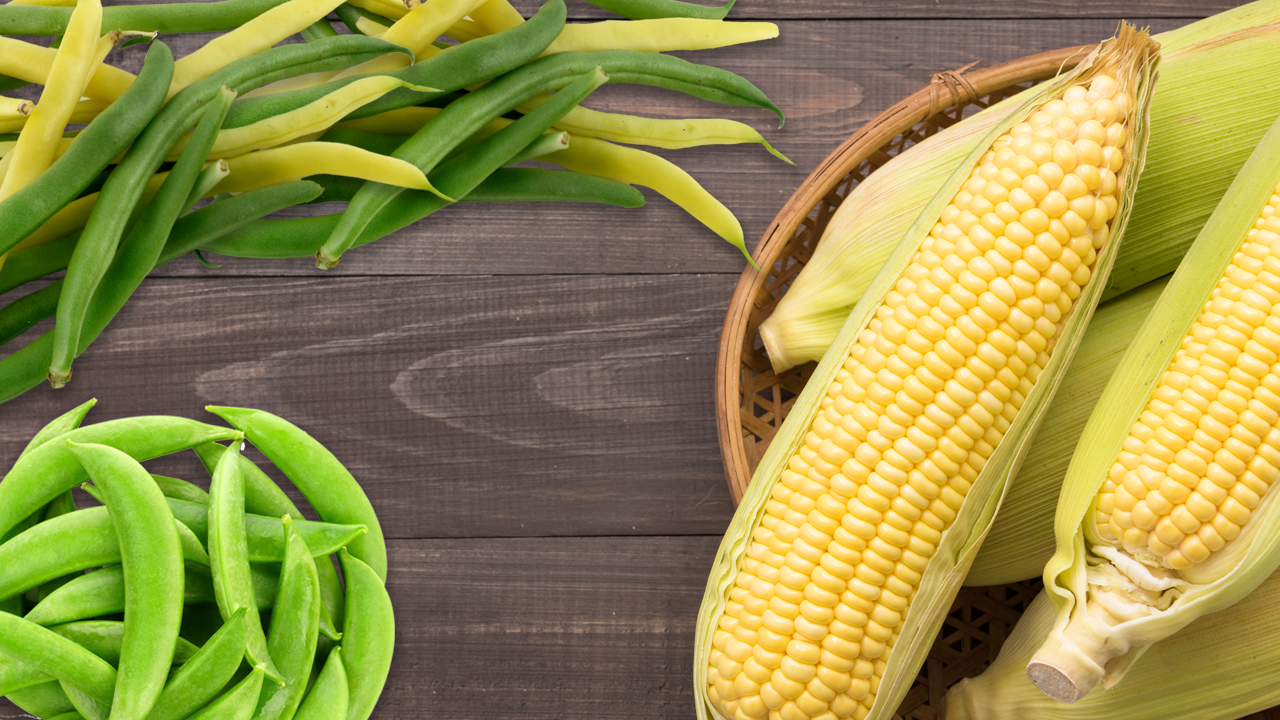
Produce 101: Peas, Beans, and Corn
Produce 101: Peas, Beans, and Corn and How They Are Connected
This one is a little different. Today we are going to talk about three seemingly different items, but focus on how they are intertwined.
A good place to start with with the growing method.
The Three Sisters is an ancient, symbiotic growing method that has been utilized by Native Americans for centuries. Three different crops—corn, beans, and squash—are planted together in order to maximize yields and ensure a sustainable crop. The corn serves as a pole for the bean vines to climb upon, the bean vines support the corn and fix nitrogen back into the soil and the squash leaves serve as a canopy and eventually as a mulch.
We are going to look at two of the Sisters, beans and corn, as well as a cousin, peas, and cover squash in another episode.
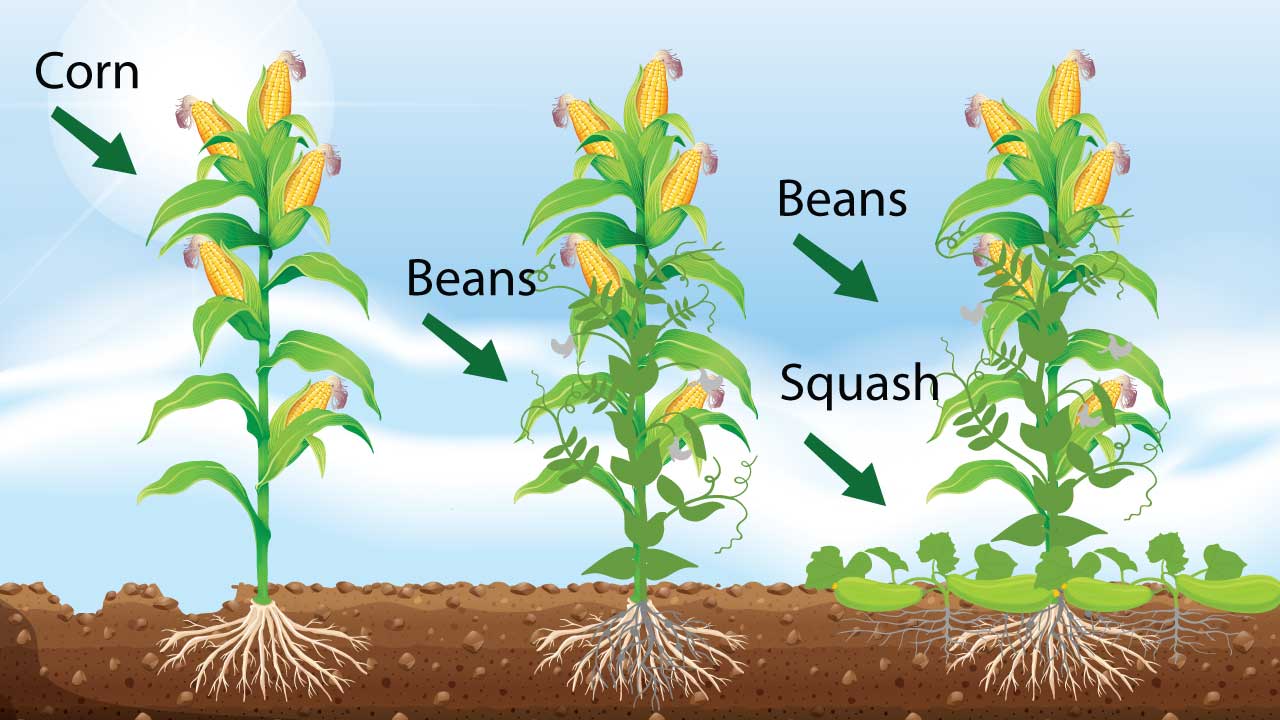
Produce 101: Peas, Beans, and Corn – Let’s Talk About Peas First
Peas and beans are both legumes and both have the ability to fix nitrogen back into the soil. Fresh peas are classified based on how they’re used, as shelling peas (such as English peas) and edible pod peas (such as Snow and Sugar Snap peas). Both have the same grade standards, U.S. Fancy and U.S. #1, which are based primarily on physical appearances.
The edible pod peas show be uniformly green, non-wrinkled, and with little or no remnants of blossoms on the stem end. While the blossoms are edible, they indicate that the pea was picked a little early and not allowed to fully mature. In addition to the above, Sugar Snap peas should be plump and firm to the touch. You eat these peas, shells and all.
Shelling peas should also exhibit the same criteria, but the peas in the pod should also be firm and well formed. English peas are also included in this family, but we are just going to talk about Sugar and Snow peas today.
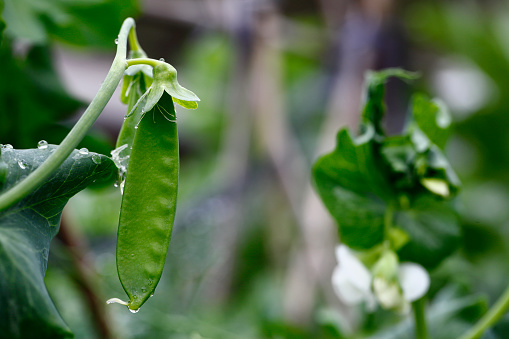
Proper Storage of Peas
Make sure you keep your peas cold to maintain that wonderful sweetness and crisp texture. You want to keep these as close to 32 degrees F as possible.
Also, don’t wash and store, as peas are very susceptible to decay if allowed to sit wet.
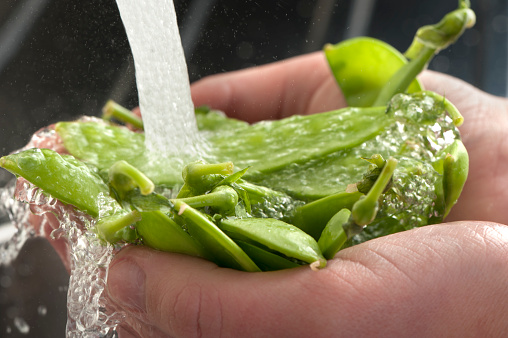
Produce 101: Peas, Beans, and Corn – Let’s Talk About Beans
Beans, come in a multitude of colors. For this discussion we are going to focus on green and yellow. Yellow wax beans are related to green beans. In fact, they are really a green bean that is selectively bred for the color and allowed to mature to a full yellow state.
Fresh snap beans, such as green bean and yellow wax beans, have three USDA grade standards, U.S. Fancy, U.S. #1 and U.S. #2. They are the most common snap beans we see today.
These standards are based on uniformity of size and shape, varietal characteristics, and an exterior that is free from damage. Specialty snap beans such as the Haricot Vert, do not have a USDA grade standard, but the handling and storage will be the same. It is a smaller and more slender variety of green bean. Look for beans that have a bright, vibrant color, are easily snapped, have a tender texture, and are free from decay.
Proper Storage and Handling of Beans
When storing snap beans, avoid getting them too cold, as they are extremely susceptible to chill damage. Brown (or rust) spots and pitting are the tell-tale signs of chill damage, and while still edible, will shorten the shelf life of your snap beans. Avoid rough handling, as they are also extremely vulnerable to bruising. You’ll want to keep these in the middle of your cooler (2) and wash them just before using.

Produce 101: Peas, Beans, and Corn – Let’s Talk About Corn
Sweet corn is a much-loved food source in America, especially in the summer. However, most of the corn produced in the United States is used for fuel and cattle feed, and very little is actually sold for table consumption.
Did You Know?
The silk plays an important role in the growing process. With one silk per kernel, the top of the corn plant rains down pollen onto the strands of silk, allowing the individual kernels of corn to develop into rows on the ear.
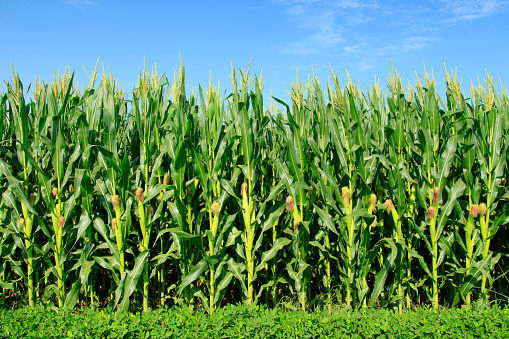
Sweet Corn Falls into Two Main Categories, Sweet and Super Sweet.
This terminology refers to how the corn processes and holds onto their sugars. Agronomists have done us a favor through years of selective breeding. Super Sweet just slows that sugar to starch conversion rate so you can enjoy that sweet corn flavor year round.
Fresh corn in the husk has three USDA specs: U.S. Fancy, U.S. #1 and U.S. #2. Corn sold without the husk is similarly graded, but there is no #2 standard.
Look for ears that have tightly formed husk leaves, firm ears, and plump kernels not showing signs of shriveling. Rows of kernels should be well formed and consistent, with the kernels being milky when ruptured.
Proper Storage of Corn
Corn loves it cold, so much so, that you may even want to consider top icing the product. Why? Sweet corn is loved as an ingredient because of the natural sugars, but when allowed to get warm, these sugars turn into starch, making the corn a bit less palatable. To help minimize this conversion, leave your corn in its protective husk until needed, the leaves serve as a natural insulation.
Check out Dan’s Produce 101: Peas, Beans, and Corn
Contact your Sales Consultant about adding peas, beans, and corn to your next order. If you are not a customer, find out how to become one today!
Content provided by Chef Daniel Snowden, the Director of Culinary Development for FreshPoint Central Florida. He has been in the produce industry almost 20 years, and loves getting geeky about food. Additional contributions by Lisa Brizard.
Some tools you can use:
Visit freshpoint.com for our seasonal availability guides—and while you are there, check out the FreshPress, our latest market report. Place your orders online with ease at myfreshpoint.com. Did you know you can receive real-time reliable delivery alerts on the day of your delivery? Activate and subscribe at FreshPoint.com/mydelivery
Download our app and take your produce management on the go. Place orders, review flyers, watch videos…all in one spot!
Find out more details about our UBU program, and how we are shining a spotlight on food waste while making value and food safety a priority.
We buy local to strengthen regional economies, support family farms, preserve the local landscape, and to provide fresh-from-the-farm food to our customers. Local.freshpoint.com connects you to your local farmers like never before! Customize your search by zip, city, state, radius…even by crops and growing methods. Pop in your zip code and learn about our local farmers.
Socialize with us!
Did you know we are on YouTube? Head over to our page and check out our 75+ videos. Don’t forget to subscribe, and also be a part of our Bell Team—hit the little bell icon to get notifications when we upload new videos.
Follow FreshPoint, Inc. on Facebook, Twitter, Instagram, and LinkedIn…and follow The Produce Hunter on Instagram as she finds the best specialty produce at the Santa Monica Farmers Market.

